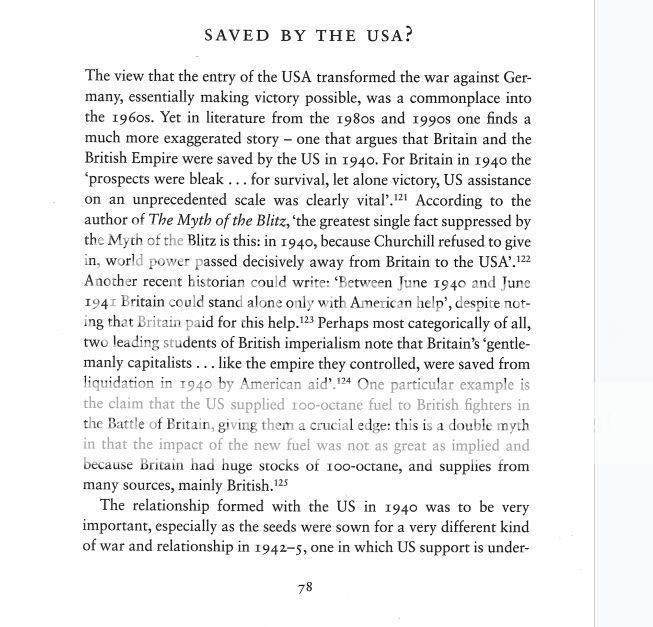
 |
|
#1061
|
|||
|
|||
|
Britain's War Machine: Weapons, Resources and Experts in the Second World War - David Egerton Hardcover: 464 pages Publisher: Allen Lane; First Edition edition (31 Mar 2011) Language English ISBN-10: 0713999187 ISBN-13: 978-0713999181 It's on Amazon. EDIT: Here's the page I was refering to.  It then goes on to explain the sources of this fuel. Kurfurst will hate it but the stock figures are from Gavin Bailey's paper.. Last edited by winny; 04-19-2012 at 07:27 PM. |
|
#1062
|
||||
|
||||
|
Quote:
Last edited by Crumpp; 04-19-2012 at 07:29 PM. |
|
#1063
|
||||
|
||||
|
Quote:
|
|
#1064
|
||||
|
||||
|
Quote:
|
|
#1065
|
|||
|
|||
|
Desperate times call for desperate measures. There was a war on you know..
|
|
#1067
|
|||
|
|||
|
Quote:
|
|
#1068
|
||||
|
||||
|
Quote:
This is the kind of baloney that adds nothing to the credibility of participants in this thread. It concretely demonstrates you have no idea how aircraft work. Standard Day exists everywhere in aviation and is very important. It is the atmospheric conditions that most of the data you see is converted too. Aircraft performance varies greatly based on density altitude, including your engines power development. And yes, conditions do change but not based on any countries borders. Why do you think the very first thing Air Traffic Control will relay to you as a pilot, is the altimeter setting? Quote:
|
|
#1069
|
||||
|
||||
|
Quote:
As they state, it is a definate overload condition!! |
|
#1070
|
||||
|
||||
|
Quote:
 The technical order for this modification was not published until February 20, 1940.  This is not a minor modification nor is it an easy one from a manufacturing standpoint. Cylinder heads are a major component. Two heads have to be produced for every engine on the assembly line. All of the engines in the RAF inventory also have to have new cylinder heads produced as well. It is not going to happen overnight. Milo Morani posted the instructions for Pilot Operating Notes earlier in this thread. The way it works is any technical instructions or service bulletins kept with the Operating Notes and act as updates as they are published. When a new edition of the Operating Notes is published, all technical instructions issued since the previous Operating Notes edition are incorporated into the new edition of the Operating Notes. That means we should see a mirror reflection of the January 1942 Operating Notes in our June 1940 edition if 100 Octane fuel was the standard and our technical instruction dated February 20, 1940 was intended for all operational aircraft. Our June 1940 notes should alert the pilot in the operating that 100 Octane is the fuel for ALL OPERATIONAL UNITS just like the January 1942 edition IF 100 Octane is the standard fuel in use. June 1940 Edition:   They do not reflect anything about 100 Octane fuel in the operating limits and nothing about it being for ALL OPERATIONAL UNITS. This timeline of a gradual phase in of 100 Octane fuel begining in June 1940, becoming significant in October 1940, and operational conversion by December 1940 is evident from two sources. You can see this in the Pilot's Operating Notes and the amount of fuel available at the airfields prior to June 1940. 100 Octane use is insignificant until October 1940. Proir to June 1940 we do not see a “combined” amount available at the airfields unless folks are now going to start claiming 100 Octane was in widespread use in 1938!! I am sure that will be the next argument. 
Last edited by Crumpp; 04-19-2012 at 09:37 PM. |
 |
|
|